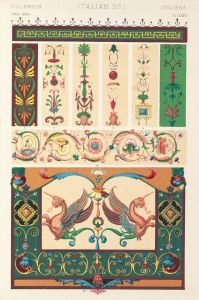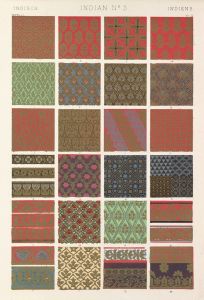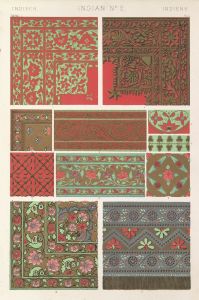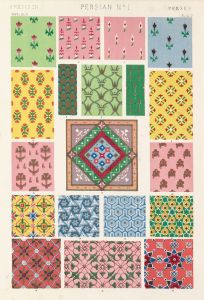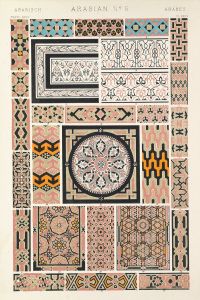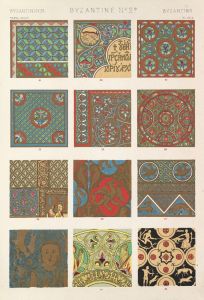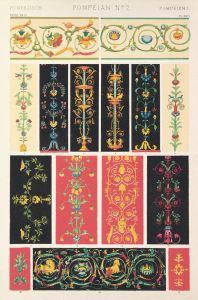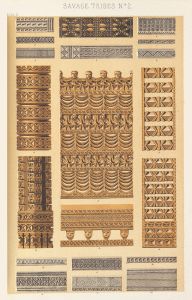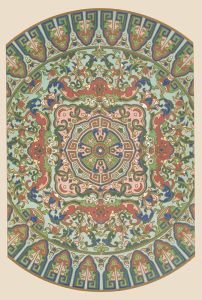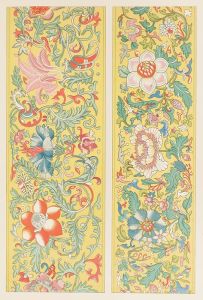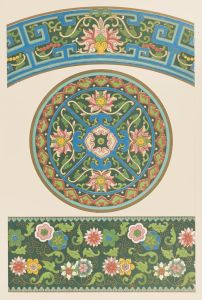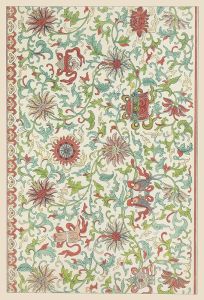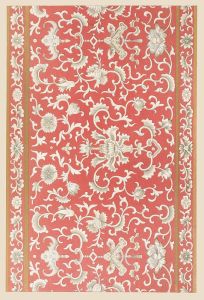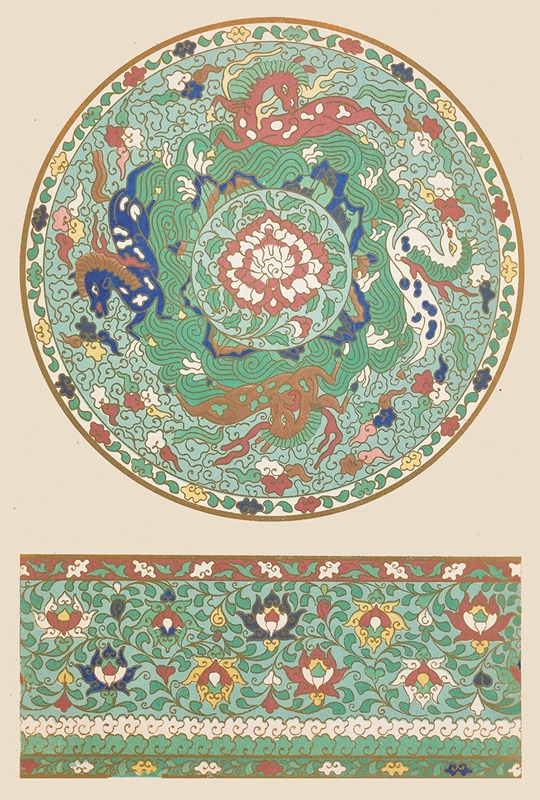
Examples of Chinese ornament, Pl.23
A hand-painted replica of Owen Jones’s masterpiece Examples of Chinese ornament, Pl.23, meticulously crafted by professional artists to capture the true essence of the original. Each piece is created with museum-quality canvas and rare mineral pigments, carefully painted by experienced artists with delicate brushstrokes and rich, layered colors to perfectly recreate the texture of the original artwork. Unlike machine-printed reproductions, this hand-painted version brings the painting to life, infused with the artist’s emotions and skill in every stroke. Whether for personal collection or home decoration, it instantly elevates the artistic atmosphere of any space.
"Examples of Chinese Ornament, Pl.23" is a plate from the influential design book "The Grammar of Ornament" by Owen Jones, first published in 1856. Owen Jones was a British architect and designer known for his work in color theory and his contributions to the decorative arts. His book, "The Grammar of Ornament," is a comprehensive collection of design patterns and motifs from various cultures around the world, aiming to provide a source of inspiration and reference for designers and architects.
Plate 23 specifically focuses on Chinese ornamentation, showcasing the intricate and symbolic designs characteristic of Chinese art. The plate is part of a broader section dedicated to Chinese design, which Jones admired for its harmony, balance, and the use of color. Chinese ornamentation often features motifs such as dragons, phoenixes, clouds, and floral patterns, each carrying specific cultural and symbolic meanings. These motifs are typically rendered in vibrant colors and are used in various applications, from architecture to textiles and ceramics.
Jones's work was groundbreaking in that it systematically categorized and presented these designs to a Western audience, many of whom had limited exposure to non-Western art forms. His approach was both educational and inspirational, encouraging designers to look beyond their cultural boundaries and appreciate the aesthetic principles of other traditions. In doing so, Jones contributed to a greater understanding and appreciation of global art forms during the 19th century, a time when the world was becoming increasingly interconnected through trade and exploration.
The inclusion of Chinese ornament in "The Grammar of Ornament" reflects the Victorian era's fascination with the exotic and the increasing influence of Asian art on Western design. This period saw a growing interest in Chinoiserie, a European interpretation and imitation of Chinese and East Asian artistic traditions, which became popular in interior design and decorative arts.
Jones's work remains significant today, not only as a historical document but also as a continuing source of inspiration for contemporary designers. His emphasis on the universality of design principles and the importance of cultural diversity in the arts resonates with modern sensibilities. "Examples of Chinese Ornament, Pl.23" exemplifies the detailed and methodical approach Jones took in documenting and sharing the beauty of Chinese design with the world.
Overall, Owen Jones's "The Grammar of Ornament" and its plates, including the Chinese ornament examples, played a crucial role in the dissemination and appreciation of global design traditions, influencing generations of artists and designers in the process.





